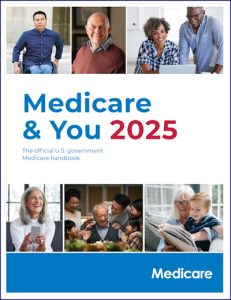Posted on Friday, 11th October 2024 by Dennis Damp
 Print This Post
Print This Post
More than 71 million Americans will see a Cost-of-Living Adjustment (COLA) of 2.5% in their Social Security benefits and Supplemental Security Income (SSI) payments in 2025. Social Security retirement benefits will increase on average $49 per month starting in January.
Federal retiree annuities under the Civil Service Retirement System (CSRS) receive the full 2.5% increase while those under the Federal Employees Retirement System (FERS) receive 2.0%, often referred to as the diet COLA.
The 2025 COLA doesn’t account for the 13.5% rise in the Federal Employee’s Health Benefit (FEHB) premiums next year. The health care premium increases will impact next year’s COLA, not the current COLA determination.
Federal retiree annuities and Social Security benefits increase when the cost-of-living rises, as measured by the Department of Labor’s Consumer Price Index (CPI-W).
View the table for all COLAs from 1999 to the present to see how it has changed over the years.
Medicare & You Handbook
Medicare’s 2025 guide is worth the time and effort to review and learn about your exceptional Medicare benefits. It provides sign up guidance, Medicare coverage, the various plan options and how to get help paying your health care drug costs, and finally your rights and protections.
Get started with a complimentary retirement planning session
and a FREE retirement planning report
Every year Medicare sends out their “Medicare & You” pamphlet to anyone on Medicare or approaching age 65. However, many simply throw out the previous year’s edition and replace it with the new one. Actually, there is much to discover with each edition, especially as we age and require more services.
This booklet is tailored to your state or territory, in my case Pennsylvania. Coverage changes and enhancements are covered on page 2 with a Table of Contents on page 3 followed by an extensive Index of Topics on pages 4 through 8.
2025 Changes
Part D prescription drug plans cap yearly out-of-pocket costs at $2,000. Once this limit is reached, Medicare pays all drug copayments and coinsurance for the remainder of the year. Additionally, enrollees will be allowed to spread their drug costs across monthly payments throughout the year if needed.
Expanded mental health care including outpatient services from professional therapists, and more resources for caregivers will be available. Caregivers are now eligible for additional training that includes how to give medications, personalized care and more as part of a tailored treatment plan.
Stating next year, telehealth visits must be in an office or medical facility located in a rural area for most telehealth services. There are exceptions for mental and behavioral health.
Postal Service employees, retirees and their families will be covered by the new PSHB program. Twenty percent of the current FEHB enrollees will transition to this new system this open season. Postal employees that retire on or after January 1, 2025, and are under 64, will be required to enroll in Medicare Part B when they become entitled to Medicare Part A (typically at age 65) to remain enrolled in a PSHB plan.
The Long & Short of It
This guide is a wealth of information, easy to read, and follow, something government isn’t exactly well known for. Prior to signing up for Medicare, most don’t know the difference between Original Medicare, Medicare Advantage (MA), and Medicare Supplement Insurance (Medigap).
It isn’t only for those just signing up for coverage, many change from Original Medicare to Medicare Advantage plans to reduce costs and/or improve coverage. Others, after making a change, end up moving back to Original Medicare if the coverage and cost savings they thought they were getting don’t materialize. It’s a two-way street fraught with anxiety if not prepared.
The “At a Glance” section starting on page 11 compares Original Medicare (Parts A & B) to Medicare Advantage (Part C) side-by-side. It’s to the point and highlights the significant differences between the two. If you’re considering moving to a MA plan this is definitely a must read. Medicare Supplement plans are covered in Section 5.
Section 11 compares non-FEHB health and drug plans in your area, it starts on page 119 and includes over 50 pages and this doesn’t include Medigap offerings in your state! They remind everyone at the beginning of this section that you can’t buy a Medigap policy while you’re in a MA plan.
Federal employees and annuitants desiring to stay in the FEHB or PSHB program must review the FEHB or PSHB plan brochures for available MA and MPDP plans associated with the carriers.
Twists and Turns
There are differences for those enrolled in one of the Federal Employee’s Health Benefits (FEHB) plans. For example, Section 6 in the guide covers Medicare drug coverage (Part D) and states “you’ll likely pay a late enrollment penalty for Part D coverage if you join a plan later.”
This penalty is waived for MA plans offered by your FEHB carrier; this also applies when you opt for a Medicare Prescription Drug Plan (MPDP) option. Furthermore, you will be required to pay a Part D premium if your income exceeds a certain amount as determined by the Income Required Monthly Adjusted Amount (IRMAA). Equally important, this also impacts Part B premiums; they too are income adjusted.
Look at drug plans that include your prescription drugs on their formulary (a list of prescription drugs covered by a drug plan). Then, compare costs.
Signing up for MA Plans
When you sign up for a FEHB MA plan you MUST stay enrolled in your FEHB plan. Most if not all of the FEHB MA plans have a zero premium, you are only responsible for the FEHB plan premium. These plans often offer a partial Part B premium reimbursement for you and your spouse. Compare FEHB plans to their partnered MA options to better understand these differences.
If you select a non-FEHB MA plan you can suspend your FEHB coverage to retain the option to return during the next open season. If you don’t suspend your coverage when moving to a private sector MA option, you can’t go back.
Caution
Don’t risk losing your FEHB coverage. If you are considering a Medicare Supplement plan you can’t suspend your FEHB coverage, and you won’t be able to return to the FEHB program next open season. Medicare Supplement plans (Medigap) are only offered by private insurance companies.
Helpful Retirement Planning Tools
- Financial Planning Guide for Federal Employees and Annuitants
- Complimentary Retirement Planning Session
- How to Avoid Retirement Processing Delays (UPDATE)
- Hiring a Financial Planner
- TSP Guide
- Budget Work Sheet
- 2024 Pay Tables
- 2025 Federal Employees Leave Record
- Retirement Planning for Federal Employees & Annuitants
- The Ultimate Retirement Planning Guide – Start Now
- Deciding When To Retire – A 7-Step Guide
- Medicare Guide
- Social Security Guide

Disclaimer: The information provided may not cover all aspect of unique or special circumstances, federal regulations, medical procedures, investment, and benefit information are subject to change. To ensure the accuracy of this information, contact relevant parties for assistance including OPM’s retirement center.
Over time, various dynamic economic factors relied upon as a basis for this article may change. The information contained herein should not be considered investment advice and may not be suitable for your situation. This service is not affiliated with OPM or any federal entity. You should consult with a financial, medical or human resource professional where appropriate. Neither the publisher or author shall be liable for any loss or any other commercial damages, including but not limited to special, incidental, consequential, or other damages.
Last 5 posts by Dennis Damp
- I Rolled Over My TSP Account to an IRA – Should You? - November 21st, 2025
- The 2026 FEHB & PSHB Open Season Selection Guide - November 6th, 2025
- Medicare & You 2026 – Significant Changes on the Way - October 31st, 2025
- A 30-second Check Could Change Your Retirement Plan - October 20th, 2025
- Prescription Drug Costs – Major Price Cuts Coming - October 17th, 2025
- Government Shutdown Continues – Suffering the Consequences - October 15th, 2025
- Health Care Premiums Announced for 2026 – Hold on to your Hat! - October 13th, 2025
- Inflation Concerns and High Prices Persist – What’s Next - October 10th, 2025
- Roth Conversion Article Update and Income Tax Impact - September 25th, 2025
- TSP Traditional to ROTH IRA Conversions Coming Soon - September 19th, 2025
- TSP Required Minimum Distributions, Annuities, and Transfers - September 5th, 2025
- FEHB & PSHB Open Season – Higher Premiums Heading Our Way! - August 29th, 2025
Tags: 2025 COLAs, Medicare, Medicare & You Handbook, Social Security
Posted in BENEFITS / INSURANCE, ESTATE PLANNING, FINANCE / TIP, RETIREMENT CONCERNS, SOCIAL SECURITY / MEDICARE, SURVIVOR INFORMATION, WELLNESS / HEALTH | Comments (0)
 Print This Post
Print This Post



